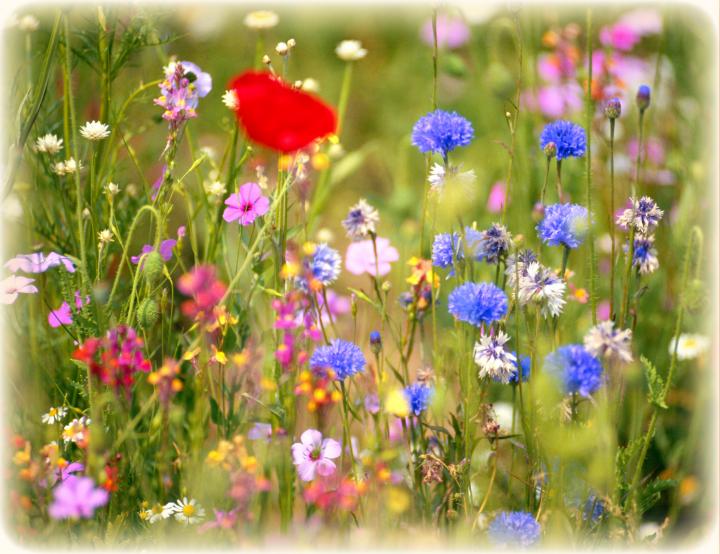






Grow colorful wildflowers in your own yard!
Photo by ThinkstockWildflowers make themselves at home when they’re happily married to the soil and climatic conditions they’ve evolved in. When there is a suitable match of plant and growing conditions, it’s easy.
There are more than 6,000 native wildflower species growing all across America. Some are drought-tolerant and some prefer wet and boggy spots. Don’t try to grow sun lovers like black-eyed Susans in a shady spot or bloodroot in full sun.
Ignore those ads promising that one container full of seeds will turn into a meadow of wildflowers. Establishing any plant community takes prep work and maintenance. A wildflower meadow is not permanent nor is it neat and tidy. Nature goes through dormancy, and nature can be messy.
“Preserve it in the wild.
Perpetuate it in your garden.”
That’s the motto of the Lady Bird Johnson Wildflower Center. Shop at reputable native-plant nurseries rather than kidnapping plants from the wild. Collecting wild plants has already seriously diminished and even eliminated whole colonies of natives, and it’s not even very successful.
Find a native-plant nursery which uses plants propagated from wild populations within 50 miles (or as close as possible) to your garden. Look for plants that are “nursery propagated” not “nursery grown.”
For a list of native-plant nurseries, see the Wildflower Center’s suppliers directory.
Before you spend any money on plants or seeds, you must understand the character of your site and your soil. If you don’t already know if your soil is acid or alkaline, get it tested. Your local cooperative extension service will run a soil test for free or for a nominal cost.
Some native plants thrive in what we might consider a lean or poor soil. When you’re growing them in your garden, don’t fertilize, even with organic material. It actually encourage the growth of weeds.
The following native plants are widely adaptable and recommended by experts at a Brooklyn Botanic Garden symposium. To make sure that a wildflower is recommended for your area, we advise consulting your local Cooperative Extension Service.
Native Perennials
Blue star
New England aster
Wild ginger
Cabbage-leaf coneflower
Stonecrop
Catchfly
Compass plant
Cup plant
Indian pink
Ladies’-tresses orchid
Native Geophytes (Bulbs)
Dutchman’s breeches
Whippoorwill flower
Bloodroot
Yellow trillium
Jack-in-the-pulpit
Canada lily
Desert lily
Spider lily
Crinum lily
Native Ferns
Narrow beach fern
Male fern
Glade fern
Lady fern
Goldie’s fern
Five-finger maiden-hair fern
Southern beech fern
Interrupted fern
Rusty woodsia
Deer fern
Maiden fern
For a list of invasive wildflowers, consult the Web site www.wildflowerinformation.org. You may also wish to reference the USDA Web site for a state by state list of noxious weeds.
Copyright © www.100flowers.win Botanic Garden All Rights Reserved